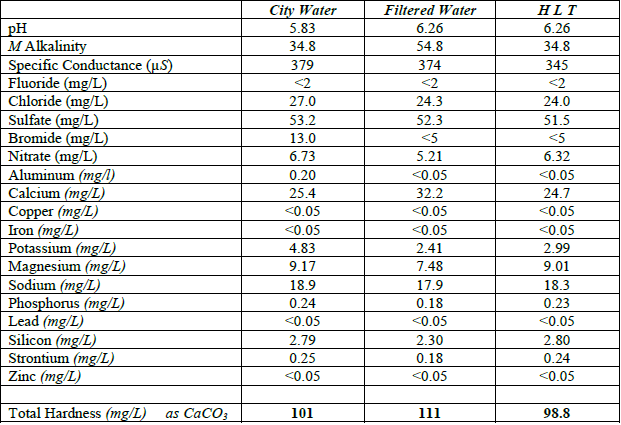The Bolton-specific numbers are included in the report I linked to above.
Russ
Russ

The Bolton-specific numbers are included in the report I linked to above.
Russ
Is it a crazy thought that our LBS's could supply brewing water, doing all the necessary magic?
I'm all for learning but seems like something the experts could do for some of us new brewers.
Tim
But every "supplement pack" would need to be tailored to what is in the base water - which is different for every customer/every city, and would have to be modified for the number of gallons of base water...
















But every "supplement pack" would need to be tailored to what is in the base water - which is different for every customer/every city, and would have to be modified for the number of gallons of base water...
There is already a company doing this. It's called AccuMash. You can look into them. They have a number of different water additions packets that you add to distilled water to make water designed for a few different styles of beer.
Me, I prefer to do it the old fashioned way, adjusting my own water per batch...
Does anyone have newer reports?
So far I can only find 2014 numbers from the Cincinnati Miller plant and 2011 numbers from the Cincinnati Bolton plant.
(I need both because I sometimes brew up north with my friends in West Chester, and they get their water from Bolton. And make no mistake, 9.0pH is no misprint. That's what's coming out of Bolton. I just tested again it last night. It always surprises me.)
I've been looking at the report but in terms of the water profile calculators I've looked at I'm not seeing how this is useful. It doesn't seem to have most of the parameters that are needed but maybe I'm missing something?Here you go: https://www.cincinnati-oh.gov/water...2016-water-quality-report-updated-march-2017/
Let me know if we can help!
Russ
I've been looking at the report but in terms of the water profile calculators I've looked at I'm not seeing how this is useful. It doesn't seem to have most of the parameters that are needed but maybe I'm missing something?
No need to apologize to me... Someone asked for it and I provided. No worries.
